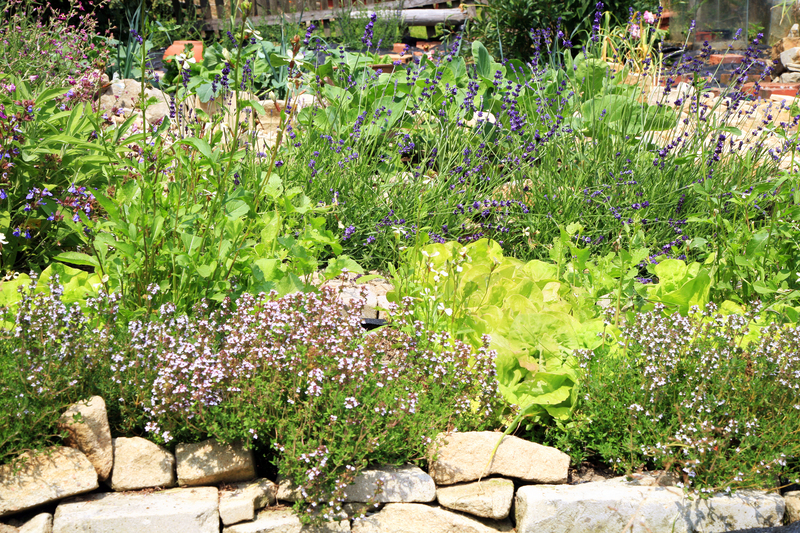Transform Your Garden into a Fortified Haven Against Weather Damage
Posted on 06/06/2025
Transform Your Garden into a Fortified Haven Against Weather Damage
If you love spending time outdoors or take pride in your green spaces, protecting your garden from severe weather is crucial. Transforming your garden into a fortified haven against weather damage is not just about enhancing its beauty, but also about improving its resilience. From blistering heat waves to torrential rains and strong winds, weather can pose an array of challenges. Proactively fortifying your garden ensures that your plants remain healthy and your landscape stays pristine regardless of the weather.
Why Does Weather Damage Gardens?
Gardens are constantly exposed to the elements. High winds can snap branches or uproot tender plants, heavy rainfall leads to soil erosion and floods, while hail and frost can devastate even mature flora. Understanding the impact of these environmental factors is essential to weatherproofing your garden and ensuring year-round safety.

How Weather Can Damage Your Garden
- Soil Erosion: Excess rain or wind can wash away the nutrient-rich topsoil, undermining plant growth.
- Flooding: Waterlogged soil suffocates plant roots, leading to root rot and stunted growth.
- Wind Damage: Strong gusts break stems, blow away mulch, and can easily topple unsupported plants.
- Frost Damage: Sudden temperature drops freeze plant cells, resulting in withering or dead leaves and stems.
- Drought: Extended periods without water stress plants, turning lush green gardens brown.
- Hail: Ice pellets shred foliage and bruise fruits.
Planning for Weather Resilience: Comprehensive Strategies
Achieving a weather-resilient garden goes beyond reacting after a storm. Proactive planning can save you time, money, and preserve the beauty of your outdoor sanctuary.
1. Assess Your Garden's Vulnerabilities
Begin by evaluating existing weak points in your landscape. Consider these steps:
- Observe Sun and Wind Patterns: Identify which areas receive the harshest sunlight, strongest winds, and poor drainage.
- Soil Testing: Good soil health is the foundation of weather resistance. Test for composition, drainage, and fertility.
- Evaluate Plant Selection: Are your plants native or well-adapted to your region's climate? Exotic species may struggle during extremes.
2. Design with Resilience in Mind
A well-thought-out design can make or break your garden's chances of surviving extreme weather.
- Create Windbreaks: Use hedges, fences, or strategically-placed shrubs to shield vulnerable areas from strong winds.
- Utilize Raised Beds: Elevating plantings improves drainage and prevents root rot during periods of excessive rain.
- Build Berms and Swales: Contour the land to manage water flow, directing runoff away from delicate areas.
- Choose Permeable Surfaces: Paving, paths, and patios should be permeable to allow rainwater to soak naturally.
3. Select Weather-Resistant Plants
Transform your garden into a weather fortress by choosing the right plant varieties. Native plants are naturally more resilient to local weather events. Look for:
- Drought-tolerant species (e.g., lavender, sedum, ornamental grasses)
- Deep-rooted perennials (e.g., coneflower, black-eyed Susan, Russian sage)
- Wind-tolerant shrubs and trees (e.g., juniper, hawthorn, pine)
- Ground covers that protect soil from erosion (e.g., creeping thyme, clover, vinca)
_Adopt a principle of "right plant, right place" to minimize stress and foster stability._
Essential Techniques for Fortifying Gardens Against Weather Damage
Let's break down effective weatherproofing solutions to reinforce your outdoor space:
Mulching: Your First Defense
A thick layer of mulch acts as an insulating blanket for soil and roots. It maintains moisture during drought, stabilizes soil temperature, and stops erosion in its tracks.
- Apply organic mulch (bark, straw, wood chips) around plants for a nutrient boost.
- Replenish seasonally, especially after heavy rain or wind events.
Proper Drainage Systems
Waterlogged earth spells disaster for garden plants. Ensure your garden drains efficiently:
- Amend soil with sand or compost for better porosity.
- Install French drains or drainage pipes in flood-prone zones.
- Position gutters and downspouts to direct water away from planting beds.
Windproofing Your Garden
Windbreaks offer immediate protection, but for long-term results:
- Plant evergreen trees and sturdy shrubs on the windward side of your property.
- Install lattice screens or trellises as instant shields for delicate plants or vegetable patches.
- Use temporary solutions (garden fabric, row covers) during forecasted storms.
Frost Protection Tactics
_Unexpected frosts can catch the most attentive gardeners off-guard._ Boost frost-tolerance:
- Water plants before a freeze--moist soil holds heat better than dry soil.
- Cover with frost cloth, burlap, or blankets overnight during frost warnings.
- Use cloches or cold frames to shield vulnerable seedlings.
Strengthening Plants Against Hail and Heavy Rain
Hailstorms and intense downpours can tatter leaves and break stems.
- Install netting or mesh above delicate crops.
- Stake tall or top-heavy plants securely to prevent wind or hail damage.
- Practice regular pruning to maintain strong, flexible growth.
Incorporating Smart Technology
Modern solutions can further fortify gardens against weather hazards. Consider adding:
- Automated irrigation systems to maintain consistent moisture during dry spells.
- Weather sensors and smart sprinklers to adapt water schedules based on rainfall and local forecasts.
- Garden cameras to monitor your garden's condition remotely during inclement weather.
Weather Alerts and Planning
Sign up for local weather alerts to prepare for severe events in advance. Set reminders to cover, water, or harvest at-risk plants before storms hit.
Ongoing Maintenance: The Key to Long-Term Success
Transforming your garden into a fortified haven against weather extremes is not a one-off task. Regular care and vigilance make the biggest difference.
- Inspect after every storm for broken branches, compacted soil, or drainage issues.
- Reapply mulch and support stakes as needed.
- Seasonally rotate crops or replant bare spots to maintain thick ground coverage.
- Monitor for pests and disease--stressed plants are more vulnerable to outbreaks.
Educating Yourself: Outreach and Resources
Reach out to your local agricultural extension, participate in community gardening programs, or explore online gardening forums for region-specific advice. The best tips for garden weather protection often come from neighbors who share your climate!

Frequently Asked Questions on Weather-Proofing Gardens
How can I protect my vegetable garden from weather damage?
- Raise beds for better drainage.
- Use row covers to shield young plants from wind, frost, and pests.
- Pile mulch high around roots to moderate temperature and moisture.
Are there specific plants that can survive extreme weather?
Yes. Opt for resilient native plants, deep-rooted perennials, succulents, or species known for hardiness in your local area.
What is the best mulch to use for weatherproofing?
Organic mulches such as wood chips, straw, or shredded leaves offer superior insulation and replenish soil nutrients as they decompose.
How do I restore my garden after storm damage?
Clear debris promptly, prune broken or damaged limbs, replace eroded soil, and water stressed plants thoroughly. Support any leaning or destabilized plants with stakes or ties.
Conclusion: Start Your Garden Transformation Today
Creating a garden that not only survives, but thrives through storms, droughts, frosts, and everything in between is achievable with intentional planning and action. Transform your garden into a fortified haven against weather damage by combining smart design, resilient plant choices, and consistent care.
- Assess your unique landscape strengths and weaknesses
- Integrate layers of protection--physical, biological, and technological
- Stay alert and proactive with ongoing maintenance
With the right strategies, you can look forward to a healthy, vibrant garden--no matter what the weather brings! Prioritize your outdoor sanctuary today and enjoy lasting peace of mind through every season.
If you found this guide useful, share it with your gardening friends, and bookmark it for future reference. Here's to a fortified, flourishing garden--rain or shine!



